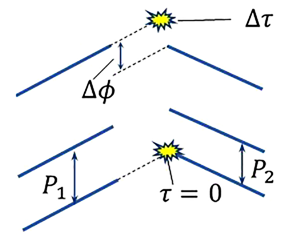Article contents
Acoustic theory of the many-bladed contra-rotating propeller: the event line and the precession of the interaction source
Published online by Cambridge University Press: 23 December 2020
Abstract

In the asymptotic theory of interaction noise from contra-rotating propellers with many blades, previous work in the frequency domain has shown that, for each combination mode/tone, the critical points that dominate the acoustic radiation can be linked to two criteria (sonic and normal-edge) and to a radial event line that spins around the annulus at the same speed as the mode. Thus the speed is different for each combination tone. In real time, however, the interactions precess around the annulus at a single speed, governed by the ‘firing order’ of the interactions, with that speed being (in general) considerably different from that of either the front or rear blade rows. The precession of the interaction is described here in detail and then demonstrated by application to three relevant architectures, including a rotor–stator configuration. The paper then considers how the blade leading-edge design affects the radial variation in the interaction location and analyses the interactions from the viewpoint of a far-field observer. The paper also connects previous time- and frequency-domain results by showing that the sonic and normal-edge criteria can be derived in the time domain using the precession speed. The case of equal blade numbers is also included, for which the precession speed becomes infinite but for which, nonetheless, the sonic and normal-edge criteria still apply.
JFM classification
Information
- Type
- JFM Rapids
- Information
- Copyright
- © The Author(s), 2020. Published by Cambridge University Press
References
REFERENCES
- 7
- Cited by


